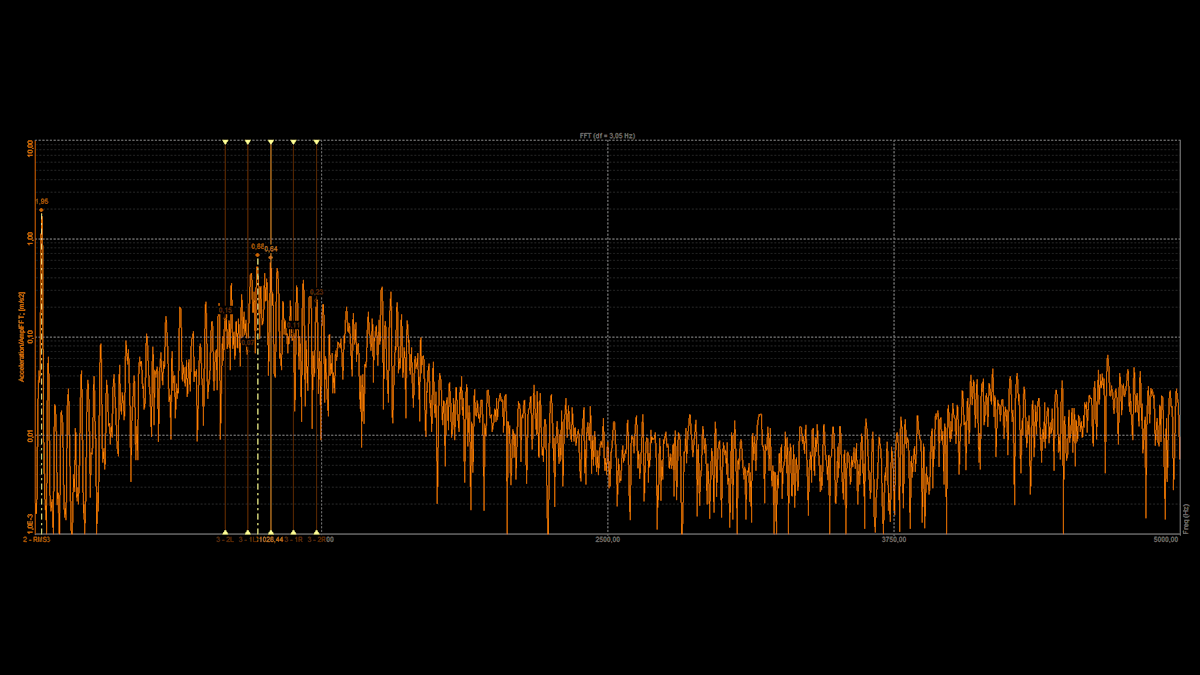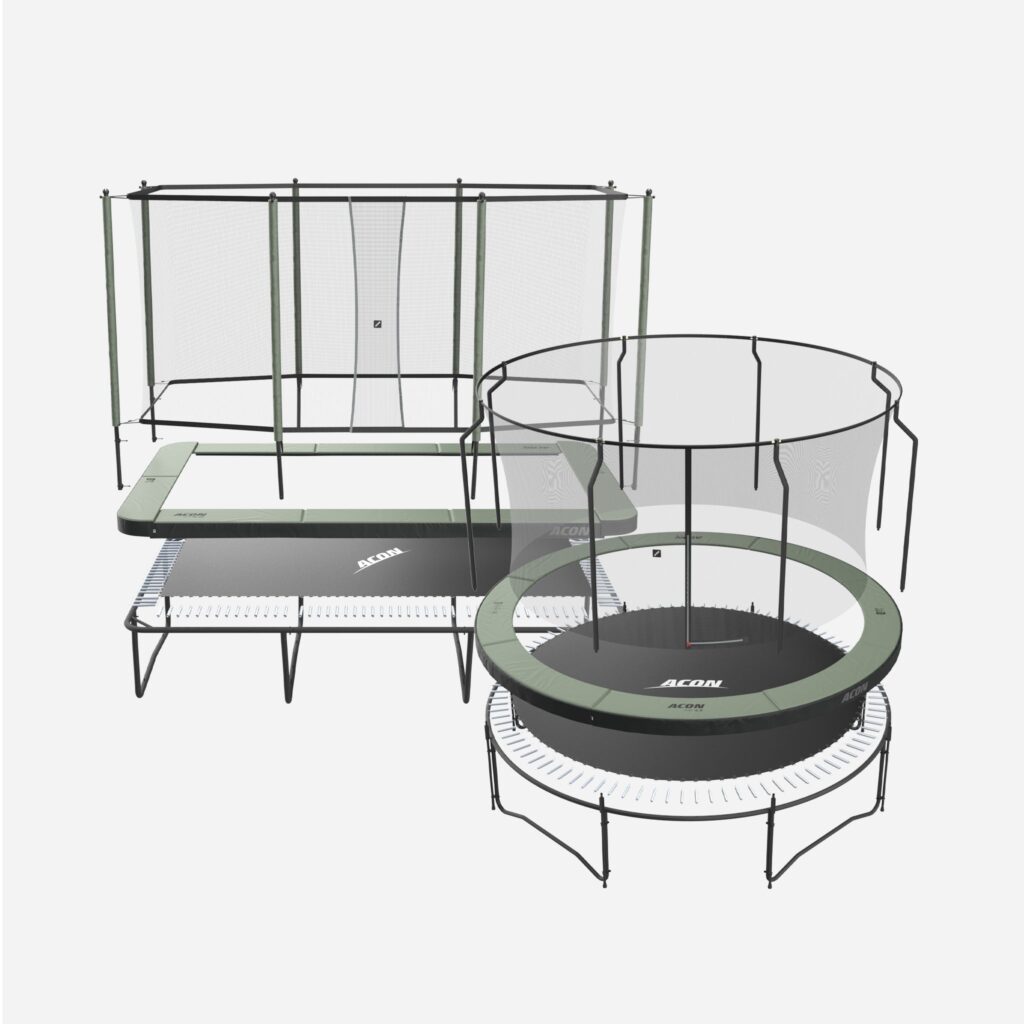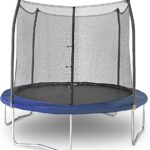To measure a trampoline, start by measuring the frame diameter straight across to the opposite edge. For rectangular shapes, measure both length and width.
Measuring a trampoline is a straightforward task crucial for purchasing the correct replacement parts, such as mats or safety nets. Ensuring you have accurate dimensions keeps your trampoline safe and functional. Whether you’re looking to replace worn-out components or you need to know the size for a potential trampoline cover, getting precise measurements is key.
Trampolines come in various shapes and sizes, and understanding how to measure them can save you time and hassle. This guide aims to simplify the process, providing you with quick and reliable methods to measure your trampoline with ease, ensuring that you get the right fit every time.

Credit: dewesoft.com
Why Proper Measurement Matters
Imagine jumping on a trampoline, feeling the rush of air as you bounce. Now, picture that excitement turning to disappointment due to ill-fitting parts or worse, a safety hazard. This is why measuring your trampoline correctly is crucial. It guarantees hours of safe fun and ensures that replacement parts fit perfectly.
Safety First: The Role Of Accurate Dimensions
Accurate measurements prevent accidents. Without them, you risk gaps or overhangs on safety padding and nets, which can cause injuries. Let’s ensure your trampoline is a safe zone.
- Measure frame diameter: This is key to getting the right safety pad.
- Check spring size: Correct springs mean better bounce and safety.
- Safety net dimensions: They should match the frame for full protection.
Fit And Compatibility: Ensuring The Right Parts
Trampolines come in many shapes and sizes. With precise measurements, you’ll find parts that fit like a glove. No more guessing games. No more wasted money.
| Part | Why Size Matters | Outcome of Right Fit |
|---|---|---|
| Mat | Prevents sagging and tearing. | Smooth bouncing surface. |
| Pad | Covers springs for safety. | Maximized protection. |
| Net | Avoids falls from the trampoline. | Secure enclosure. |
Preparation Steps Before Measuring
When readying to measure your trampoline, proper preparation is key. This ensures both accuracy and safety. Let’s get prepared with some essential steps.
Gathering The Right Tools
First things first, you need the right tools for the job. Gather a measuring tape, notepad, and pen. If your trampoline is round, a center measuring technique will be the simplest. For rectangular or square trampolines, you’ll measure across the length and width. An assistant can make the process easier.
- Measuring tape: At least as long as the diameter of your trampoline.
- Notepad and pen: To jot down measurements.
- Assistant (optional): To help hold the measuring tape.
Cleaning The Trampoline: A Necessary Precaution
Cleaning your trampoline before measuring removes debris and ensures safety. Dirt or leaves could affect the tape placement and your footing. Wipe down with a cloth and mild detergent. Let it dry before you start measuring.
| Step | Action | Reason |
| 1 | Remove toys and debris | Ensures clear space for measuring |
| 2 | Clean with mild detergent | Removes slippery substances |
| 3 | Wipe down with a dry cloth | Avoids water interfering with tape |
Measuring The Frame
Knowing your trampoline’s exact size is crucial for replacements and safety. The frame, a vital component, dictates shape and size. This section dives into frame measurement, a simple yet essential step in trampoline maintenance.
Identifying Reference Points
Begin by locating the frame’s outside edges. These are the reference points for measurement. For accuracy, identify points directly opposite each other on the frame’s circumference. Use visible markers to remember these spots.
- Mark directly across from one another
- Repeat for both diameter and height measurements
Ensuring A Level Measuring Environment
Measure on flat, even ground. Uneven surfaces lead to inaccurate readings. If the trampoline is on sloped ground, use a level to confirm your reference points are not skewed.
| Step | Action |
|---|---|
| 1 | Place the trampoline on level ground |
| 2 | Check with a level tool |
With reference points set and a level base confirmed, measuring the trampoline frame becomes effortless. Extend your measuring tape from one marked point to its opposite, ensuring the tape stays taut and level. Record the measurement at the frame’s peak for domed shapes.
Calculating The Mat Size
Measuring a trampoline may seem tricky. But fear not! Calculating the mat size is straightforward if you know the steps. A precise mat measurement ensures a perfect fit and safety. Let’s dive into the details of how to measure your trampoline mat with accuracy.
From Steel To Steel: The Correct Approach
To start, ensure your trampoline is on level ground. You want an accurate start point. Grab your measuring tape. Remember, you’re measuring from steel to steel – that means from the outer edge of the metal frame to the opposite side. This is your trampoline’s diameter.
Here’s how you do it:
- Place the end of the tape on the outer metal edge.
- Stretch the tape straight across to the opposite side.
- Make sure the tape passes right through the center.
Check measurements across several points to get the average. This ensures the frame is round. Once you have an average, you’ve got your frame size.
Counting The Springs: A Crucial Step
Measuring the mat isn’t just about the diameter. Spring count matters too. You must count each spring before they’re removed. This number decides how snug or loose your mat will be.
Walk through these steps:
- Remove all springs from the trampoline carefully.
- Count each one and record the total.
Why? Your mat size depends on the spring-hole count. Each hole must align with your trampoline’s frame. Get this number right, and you ensure a mat that fits and functions properly.
Determining Spring Length
Determining the correct length of your trampoline springs is essential for optimal bounce and safety. This guide ensures an easy and accurate measurement process.
Detaching And Measuring An Individual Spring
Follow these steps to measure a trampoline spring:
- Remove the spring from the trampoline, making sure the frame is not under tension.
- Wear gloves to avoid injury.
- Hook out one end of the spring with a spring tool or a pair of pliers.
- Repeat with the other end to fully detach the spring.
- Use a measuring tape to find the length from hook to hook.
- Record the measurement.
Average Length: When To Measure More Than One
Spring sizes can vary, even on the same trampoline. Measuring multiple springs is wise.
- Detach and measure three to five springs.
- Avoid springs that look stretched or damaged.
- Find the average:
- Add all the lengths together.
- Divide by the number of springs measured.
- The result is your average spring length.
| Spring 1 | Spring 2 | Spring 3 | … | Average |
|---|---|---|---|---|
| 7″ | 7.1″ | 7″ | … | 7.03″ |

Credit: us.acon24.com
Safety Net And Padding Measurements
Measuring a trampoline’s safety features is key to ensuring safe bouncing fun. Both safety nets and padding are critical for preventing injuries. A good fit and the right materials can make all the difference. Let’s dive into how to measure these components with precision.
Sizing The Enclosure Net Correctly
Ensuring your trampoline’s enclosure net fits perfectly is vital for safety. Start by measuring the diameter of your trampoline’s frame. Measure from one side of the metal frame to the opposite side. Make sure to measure from the outside edge. Measure in two spots, cross ways, to confirm accuracy. Check for any net attachments like sleeves or hooks, and measure the distance between them.
- Diameter of frame: Measure across the metal frame from outside edge to edge.
- Check attachment points: Note the type and spacing of net connectors.
Padding Thickness And Material Considerations
Trampoline padding protects users from frame and springs. It’s essential to measure the padding thickness. Use a ruler to measure the padding at different points to ensure uniform protection. The material of the padding also matters. Look for durable, water-resistant materials to withstand weather and use. Materials like PVC or rubber are common and reliable choices. Here’s what to consider:
| Measurement Point | Thickness | Material |
|---|---|---|
| Edge of Padding | Use a ruler to measure from top to base. | Check for UV protection and water resistance. |
| Center of Padding | Ensure uniform thickness. |
Recording And Using Your Measurements
Once you’ve finished measuring your trampoline, recording these dimensions is key for future reference. Proper documentation ensures you have the necessary information when you need it. Outlined below are the top methods and benefits of keeping your measurements on hand.
Keeping Track: Best Practices For Recording Sizes
Write it down in a dedicated notebook or save it on your device. This simple step prevents loss of information. Here are different ways to secure your measurements:
- Use a notebook: Keep it in a safe place.
- Phone or computer: Tap into digital note apps.
- Create a document: One-click access on your desktop.
- Email to yourself: Always a backup in your inbox.
Remember to note the date of recording. Update this information with any changes. Organize your records for easy retrieval.
Where To Use Your Trampoline Measurements
Knowing the exact size of your trampoline comes in handy in several situations:
| Purpose | Importance of Measurement |
|---|---|
| Buying Replacement Parts | Ensures compatibility and a perfect fit. |
| Finding the Right Cover | Protects against weather with the correct size. |
| Space Planning | Helps to manage and use backyard space wisely. |
| Selling Your Trampoline | Provides potential buyers with accurate details. |
Always double-check the measurements before making any purchases or plans. Your records will guide you to make informed decisions that save time and money.
Troubleshooting Common Measuring Mistakes
Measuring a trampoline seems straightforward, but common errors can lead to purchasing the wrong size replacement parts, or worse, safety concerns. Correct measurement ensures a perfect fit and maximum fun. Before reaching for that tape measure, let’s dive into some typical pitfalls and how to avoid them.
Oval Vs Round Trampolines: Avoiding Confusion
Oval and round trampolines may look similar, but they need different measuring tactics. Confusing the two can result in an improper fit for mats, nets, or pads.
- For round trampolines: Measure the diameter from edge to edge, crossing the center point.
- For oval trampolines: Measure the longest length and widest width at the two farthest points.
Always take multiple measurements to confirm accuracy. Ensure your tape is taut and straight, not sagging.
Adjusting For Tension Differences In Sprung Vs. Springless
Springs or no springs, tension variations change how you measure.
For sprung trampolines: measure spring size from hook to hook after removing them from the trampoline. Count springs and ensure compatibility with your frame size.
For springless trampolines: focus on the frame size since tension is based on the elastic system attached around the edge.
| Type | Measuring Technique | Note |
|---|---|---|
| Sprung | From hook to hook for springs | Remove springs, lay them flat |
| Springless | Frame size only | Check elastic system |
Remember to measure frame size from the outside edge to the opposite outside edge, crossing the center.

Credit: www.amazon.com
Frequently Asked Questions On The Definitive Guide On How To Measure A Trampoline Easily & Accurately
What’s The Easiest Method To Measure A Trampoline?
Measuring a trampoline involves measuring straight across the middle, from one edge to the opposite. Ensure the tape is pulled tight for accuracy. Choose a day without wind to prevent measurement errors.
Can You Measure A Trampoline Without Tools?
It’s challenging to measure a trampoline without any tools. A tape measure is essential for accuracy. However, for rough estimates, use body measurements like arm span or steps as reference points.
How Do You Find Trampoline Size For Replacement Parts?
To find the correct size for replacement parts, measure the frame diameter for the mat and spring size for the springs. Check the trampoline manual for specifications or consult the manufacturer for guidance.
What’s The Importance Of Accurate Trampoline Measurement?
Accurate measurements ensure you buy the correct size replacement parts and safety pads. This keeps the trampoline safe and functioning optimally, preventing accidents and ensuring maximum longevity of the equipment.
Conclusion
Measuring your trampoline accurately ensures a perfect fit for replacement parts and safety upgrades. By following the steps outlined, you’ll get precise measurements every time. Remember, keep your tape measure taut and measure twice to avoid errors. Happy bouncing on your well-measured trampoline!


